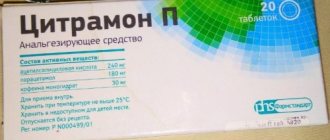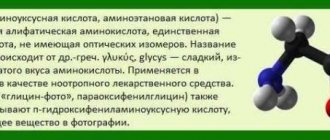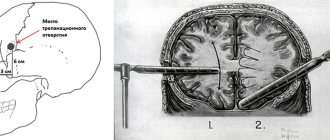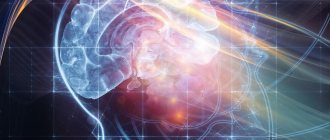"Haloperidol" in the practice of a narcologist
The use of Haloperidol is possible not only for mental disorders. It is used by practicing narcologists to correct behavior in people trying to recover from drug addiction and alcoholism. Indications for prescribing the drug are the following conditions:
- endogenous and pharmacogenic psychosis
- pronounced agitation that does not respond to tranquilizers
- severe depression of mood, apathy
- psychosis due to withdrawal symptoms
- inappropriate behavior when abusing illegal substances
In alcoholics, Haloperidol helps relieve symptoms of delirium. It relieves hallucinosis, paranoia, delirium and other severe mental disorders well. The drug allows you to eliminate acute manifestations of psychosis in drug addicts.
Effect of haloperidol on the body
Haloperidol blocks receptors that are located in the mesolimbic system. She is responsible for memory, emotions and pleasure. Along with a pronounced antipsychotic effect, the drug has a calming effect. It also eliminates vomiting. As a result of the use of haloperidol in patients, the following is noted:
- elimination of delusional states, hallucinations and manias that occur during intoxication with alcoholic beverages or narcotic substances
- no withdrawal symptoms
- restoration of emotional background
This medicine is not a first-line drug and its prescription to the patient is carefully verified and analyzed by doctors. But if the patient’s body is resistant to other antipsychotics, the doctor may prescribe haloperidol. In combination with antidepressants, small doses of this drug can help combat mental disorder. If the dosage is exceeded, there is a possibility of developing neuroleptic syndrome, which is accompanied by inappropriate human behavior.
Drug addiction
When used correctly in normal doses, this medicine is not addictive. But in rare cases of an independent increase in the amount of the incoming substance, withdrawal syndrome appears after refusing it. With abrupt withdrawal of the drug, or long-term use of Haloperidol, mental, neurological and other disorders may occur.
They usually develop in the first days after discontinuation or reduction of dosage, and disappear after 3-4 days. And some changes persist for a month. This reaction is explained by the specific effect of the antipsychotic on neural connections. Its use leads to the relief of excitement, and when “Haloperidol” stops entering the body, dopamine receptors are activated. There is an effect of a sharp release of the substance after previous inhibition. After which you have to resort to symptomatic therapy and carry out rehabilitation.
Signs of withdrawal
Withdrawal syndrome most often develops in people taking typical antipsychotics, which include Haloperidol. This manifests itself in the leveling of all previous effects of the drug. A person develops:
- stress, anxiety
- aggressiveness and irritability
- worsening mental pathology
- severe psychosis (called “hypersensitivity psychosis”)
- tremors, muscle spasms, convulsions, trembling of the whole body
- insomnia
In some cases, dependence on Haloperidol manifests itself in atypical disorders. They are determined by the individual characteristics of the body. A person complains of headache, nausea, indigestion, severe fatigue, and sweating.
Giving help
To prevent withdrawal syndrome after taking Haloperidol, experts recommend not stopping treatment at once. In order to restore the sensitivity of dopamine and other receptors, some time and a gradual reduction in dosage are required. If, for some reason, the antipsychotic has to be discontinued immediately, then in this case it should be replaced with another drug of similar action. An antidepressant, tranquilizer, or nootropic may be suitable as an auxiliary drug.
Symptomatic treatment consists of the use of beta blockers, which help restore the functioning of the heart and blood vessels. To get rid of extrapyramidal disorders, it is recommended to use anticholinergics. And neurological abnormalities and mental manifestations are treated with tranquilizers.
If complex therapy is not effective, the doctor may decide to start taking Haloperidol again until the patient’s condition stabilizes. And after some time, try again to stop the drug by very slowly reducing the dosage. At the same time, constant monitoring of the patient and corrective therapy are necessary.
Oral tablets Haloperidol
Instructions for medical use of the drug
Description of pharmacological action
Blocks postsynaptic dopaminergic receptors located in the mesolimbic system (antipsychotic effect), hypothalamus (hypothermic effect and galactorrhea), trigger zone of the vomiting center, extrapyramidal system; inhibits central alpha-adrenergic receptors. Inhibits the release of mediators, reducing the permeability of presynaptic membranes, disrupts reverse neuronal uptake and deposition. Eliminates persistent personality changes, delusions, hallucinations, mania, and increases interest in the environment. Affects autonomic functions (reduces the tone of hollow organs, motility and secretion of the gastrointestinal tract, eliminates vascular spasms) in diseases accompanied by agitation, anxiety, and fear of death. Long-term use is accompanied by a change in endocrine status; in the anterior lobe of the pituitary gland, the production of prolactin increases and the production of gonadotropic hormones decreases.
Indications for use
Psychomotor agitation of various origins (manic state, mental retardation, psychopathy, schizophrenia, chronic alcoholism), delusions and hallucinations (paranoid states, acute psychosis), Gilles de la Tourette syndrome, Huntington's chorea, psychosomatic disorders, behavioral disorders in old age and childhood, stuttering , long-lasting and treatment-resistant vomiting and hiccups. For haloperidol decanoate: schizophrenia (maintenance therapy).
Release form
Tablets in packs of 50 pieces of 0.0015 g and 0.005 g;
Pharmacodynamics
Blocks postsynaptic dopaminergic receptors located in the mesolimbic system (antipsychotic effect), hypothalamus (hypothermic effect and galactorrhea), trigger zone of the vomiting center, extrapyramidal system; inhibits central alpha-adrenergic receptors. Inhibits the release of mediators, reducing the permeability of presynaptic membranes, disrupts reverse neuronal uptake and deposition. Eliminates persistent personality changes, delusions, hallucinations, mania, and increases interest in the environment. Affects autonomic functions (reduces the tone of hollow organs, motility and secretion of the gastrointestinal tract, eliminates vascular spasms) in diseases accompanied by agitation, anxiety, and fear of death. Long-term use is accompanied by a change in endocrine status; in the anterior lobe of the pituitary gland, the production of prolactin increases and the production of gonadotropic hormones decreases.
Pharmacokinetics
When taken orally, 60% is absorbed. Plasma protein binding - 92%. Tmax for oral administration - 3-6 hours, for intramuscular administration - 10-20 minutes, for intramuscular administration of a prolonged form (haloperidol decanoate) - 3-9 days (in some patients, especially in the elderly - 1 day ). Intensively distributed in tissue, because easily passes histohematic barriers, including the BBB. Vss is 18 l/kg. Metabolized in the liver, undergoes the first pass effect through the liver. A strict relationship between plasma concentrations and effects has not been established. T1/2 when taken orally - 24 hours (12-37 hours), with intramuscular administration - 21 hours (17-25 hours), with intravenous administration - 14 hours (10-19 hours), for haloperidol decanoate - 3 weeks (single or multiple doses). Excreted by the kidneys and bile.
Use during pregnancy
Contraindicated during pregnancy. Category of effect on the fetus according to the FDA is C. Breastfeeding should be discontinued during treatment (passes into breast milk).
Contraindications for use
Hypersensitivity, severe toxic depression of the central nervous system or coma caused by taking drugs; diseases of the central nervous system accompanied by pyramidal and extrapyramidal symptoms (including Parkinson's disease), epilepsy (the convulsive threshold may decrease), severe depressive disorders (symptoms may worsen), cardiovascular diseases with decompensation symptoms, pregnancy, breastfeeding, age up to 3 years.
Side effects
From the nervous system and sensory organs: akathisia, dystonic extrapyramidal disorders (including spasms of the muscles of the face, neck and back, tic-like movements or twitching, weakness in the arms and legs), parkinsonian extrapyramidal disorders (including difficulty speaking and swallowing, mask-like face, shuffling gait, tremor of hands and fingers), headache, insomnia, drowsiness, restlessness, anxiety, agitation, agitation, euphoria or depression, lethargy, epileptic seizures, confusion, exacerbation of psychosis and hallucinations, tardive dyskinesia (see " Precautionary measures"); visual impairment (including visual acuity), cataracts, retinopathy. From the cardiovascular system and blood (hematopoiesis, hemostasis): tachycardia, arterial hypotension/hypertension, QT interval prolongation, ventricular arrhythmia, ECG changes; there have been reports of cases of sudden death, prolongation of the QT interval and impaired RI (see "Precautions"); transient leukopenia and leukocytosis, erythropenia, anemia, agranulocytosis. From the respiratory system: laryngospasm, bronchospasm. From the gastrointestinal tract: anorexia, constipation/diarrhea, hypersalivation, nausea, vomiting, dry mouth, impaired liver function, obstructive jaundice. From the genitourinary system: engorgement of the mammary glands, unusual secretion of milk, mastalgia, gynecomastia, menstrual irregularities, urinary retention, impotence, increased libido, priapism. From the skin: maculopapular and acne-like skin changes, photosensitivity, alopecia. Other: neuroleptic malignant syndrome, accompanied by hyperthermia, muscle rigidity, loss of consciousness; hyperprolactinemia, sweating, hyperglycemia/hypoglycemia, hyponatremia.
Directions for use and doses
Orally, half an hour before meals (can be taken with milk to reduce irritation on the gastric mucosa). The initial daily dose is 0.5–5 mg, divided into 2–3 doses. Then the dose is gradually increased by 0.5–2 mg (in resistant cases by 2–4 mg) until the required therapeutic effect is achieved. The maximum daily dose is 100 mg. On average, the therapeutic dose is 10–15 mg/day, in chronic forms of schizophrenia 20–40 mg/day, in resistant cases – up to 50–60 mg/day. The duration of treatment is on average 2–3 months. Maintenance doses (out of exacerbation) from 0.5 to 5 mg/day (the dose is reduced gradually). Children 3–12 years old (body weight 15–40 kg) - 0.025–0.05 mg/kg/day 2–3 times a day, increasing the dose no more than once every 5–7 days, up to a daily dose of 0.15 mg/kg. Elderly and debilitated patients are prescribed 1/3–1/2 of the usual dose for adults, with its increase no more often than every 2–3 days. As an antiemetic, 1.5 mg is prescribed. For more precise dosing, a different dosage form of the drug, such as oral drops, may be required.
Overdose
Symptoms: severe extrapyramidal disorders, arterial hypotension, drowsiness, lethargy, in severe cases - coma, respiratory depression, shock. Treatment: there is no specific antidote. Gastric lavage and subsequent administration of activated charcoal are possible (if the overdose is associated with ingestion). In case of respiratory depression - mechanical ventilation, with a pronounced decrease in blood pressure - administration of plasma-substituting fluids, plasma, norepinephrine (but not adrenaline!), to reduce the severity of extrapyramidal disorders - central anticholinergic blockers and antiparkinsonian drugs.
Interactions with other drugs
Enhances the effect of antihypertensive drugs, opioid analgesics, antidepressants, barbiturates, alcohol, weakens the effect of indirect anticoagulants. Inhibits the metabolism of tricyclic antidepressants (their plasma levels increase) and increases toxicity. With long-term administration of carbamazepine, the plasma level of haloperidol decreases (the dose must be increased). In combination with lithium, it can cause an encephalopathy-like syndrome.
Precautions for use
Prescribe with caution to patients with epilepsy, severe cardiovascular pathology, predisposition to glaucoma, impaired liver function, thyrotoxicosis, pulmonary or renal failure. During treatment, it is not recommended to engage in activities that require increased concentration (driving a car, operating machine equipment, etc.).
Storage conditions
List B: In a dry place, protected from light, at a temperature not exceeding 25 °C.
Best before date
36 months
ATX classification:
N Nervous system
N05 Psycholeptics
N05A Antipsychotic drugs
N05AD Butyrophenone derivatives
N05AD01 Haloperidol
Experts' opinion
Most doctors believe that the drug has shown good results over many years of use. It successfully relieves a person from the manifestations of the disease with major and borderline mental disorders. And all the side effects of the drug have been well studied and can be predicted.
To obtain a therapeutic effect and avoid complications, you should never take an antipsychotic without control. Only a specialist can fully calculate the harm and benefit that the drug brings and select the dosage. If you do not take into account contraindications and do not follow the instructions of the treating doctor, overestimating the recommended dose, you cannot exclude a high risk of complications. They will certainly manifest themselves with negative symptoms with multiple disorders of the mental state and functioning of internal organs.





